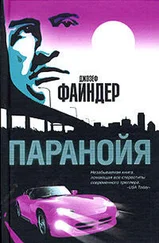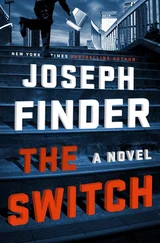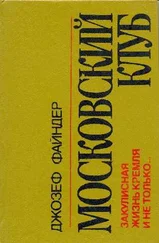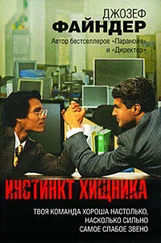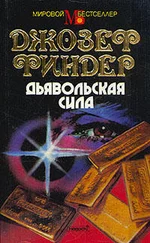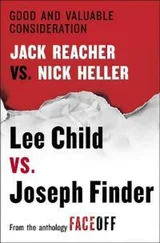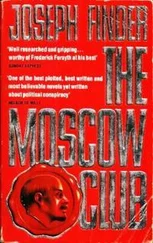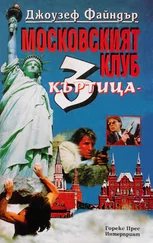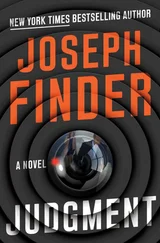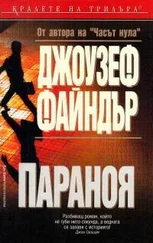Kneeling down, I ran my hand across the undercarriage, feeling for anything that might have been added while I was upstairs meeting with Koblenz. A bomb, say. I peered underneath the car, scanned carefully, and saw nothing.
Paranoia, I thought.
Just because you’re paranoid doesn’t mean they’re not really out to get you.
I opened the car door; then, just to be thorough, I got out and knelt in front of the bumper.
And found it, magnetically affixed to the back of the license plate. I pulled it off: a miniature GPS tracking device. A box about three inches by one containing a GPS receiver and a cellular modem. That little toy could transmit a vehicle’s location over a cell-phone network.
That meant that my friends at Paladin could track my car’s every move on their computers at the office or even on their PDAs or iPhones. The technology in those things was light-years beyond the days of “bumper beepers,” when you slapped a radio transmitter on a straying wife’s car so you could follow her to her rendezvous with the UPS guy at Motel 6.
I heard a scraping sound, and I looked up.
Three Day-Glo traffic cones had been placed across the mouth of the lane.
And coming at me slowly, steadily, were my three friends from upstairs.
Three against one, I thought: Not exactly a fair fight.
Though they weren’t expecting much of a fight. I could see that.
“What’s up, guys?” I said.
The guy with the long grayish hair and the droopy mustache – Taylor, I think – rasped, “Got a quick sec to talk?”
He was the only one of the three still wearing a suit, though he’d taken off his tie. The others had changed into jeans. Taylor looked like a washed-up country-and-western music star doing a late-night TV talk show.
Except for the weapon he was holding. An aluminum-frame Ruger .45 with a black polycarbonate grip, I guessed. Probably a P90. After a couple of years in the field, I’d gotten good at identifying weapons, a skill that could save your life.
But these guys weren’t here to kill me. I took Taylor at his word: They wanted to talk to me. Ask me questions.
The steroid-poisoned WrestleMania reject with the jarhead haircut – Bondarchuk, I remembered – was dangling a handful of yellow nylon flex cuffs. I wasn’t sure why Burris was here, though, unless it was for the personal satisfaction of seeing me restrained and maybe bruised a bit in the process. Otherwise, with his broken wrist, he was mostly a liability.
They advanced toward me slowly, moving into position. Burris swaggered, torquing his yard-wide shoulders back and forth, though I noticed that he kept back a good safe distance. Placing the traffic cones was a thoughtful touch. They wanted to make sure no car came by and got in the way.
“This doesn’t look like a bible-study group,” I said. I stood next to my Land Rover, at the back end, not moving.
“Let’s just do this quick and easy,” Taylor said.
“Always happy to talk,” I said, hands outspread. “Though I thought Carl and I said all there was to say.”
Taylor stopped about ten feet away and raised his weapon slowly, adjusting his grip, and thumbed up the safety to the fire position. Bondarchuk came around to my other side, flex cuffs at the ready. In his giant hand, the yellow nylon straps looked like loose threads.
A couple walked past the traffic cones, did a double take, then rushed to their car.
Neil Burris had a little smirk on his moon face, wreathed by his scrubby goatee – a chin mullet. Now I could see a weapon in his left hand, his only good hand. A black pistol-like object with yellow markings and a muzzle that was too broad to be a gun. A Taser, law-enforcement model. He stood about twenty feet away.
The operating manual that came with the professional-grade Taser told you that twenty-one feet was the maximum effective distance. Theoretically, the compressed nitrogen cartridge in the Taser would fire its two barbed aluminum probes, which were connected by wire filaments to the handheld unit, up to twenty-one feet. The miniature electric harpoons would penetrate clothing then let loose with a paralyzing fifty thousand volts and eighteen watts. Theoretically.
But Burris should have spent more time reading the manual.
Fire the thing at a distance of twenty-one feet, and the probes spread too far apart. If both probes don’t hit your subject, you won’t get an electrical circuit. It won’t work. Seven or eight feet is probably the farthest you want to be.
But Burris was afraid to stand that close to me.
“Hands up and turn around,” Taylor said.
It didn’t take me long to decide that I had no choice. A Ruger and a Taser. Three men on one.
They only wanted to talk.
Then again, some of the most ruthless interrogators at Abu Ghraib and Guantánamo had been supplied by Paladin. So maybe it was all in how you defined “talk.”
I shrugged, put my hands up, and turned around, my back to Taylor. Bondarchuk scuffed into an orthogonal position to my left, just far enough away that I couldn’t jump him.
“Hands behind your back, please,” Taylor said.
Burris had shifted position so that he was directly in front of me, and still a good twenty feet away. He raised the Taser in his left hand and pointed it at me and squinted one eye as if he were aiming. That was pure theater. You didn’t need to aim a stun gun that precisely, and if he did fire it, it wouldn’t work, and I was fairly certain he wasn’t planning on using it anyway.
I brought my hands down to my side. Bondarchuk stepped close to loop the flex cuffs around my wrists.
These were pros, and I couldn’t let them establish a tactical advantage, or it was all over.
I felt Taylor clap a hand on my left shoulder. “Hands behind your back,” he shouted, jamming his Ruger against my spine. “Do it now !”
At that instant, I stumbled, but not forward.
I fell backwards, right into him, catching him off guard. The momentum sent his gun hand sliding forward, through the gap between my torso and my right arm.
I didn’t have time to think. Lightning-fast, I slipped my hands over his wrist while twisting to my right, his elbow vised tight against my side, and pulled down on his straight arm with a sudden sharp force, hyperextending it.
The elbow is a complicated joint. It’s a hinge made out of three bones that come together with a lot of ligaments and tendons. Most people can flex their elbows nearly one hundred and eight degrees. Force it beyond that, and you’ll wedge the bony tip of the ulna under the end of the humerus, and bad things can happen. The bones can separate, or fracture, or simply snap.
I heard a snap.
Taylor’s scream was almost inhuman. It echoed off the concrete walls as he doubled over in pain and sank to the floor.
His Ruger clattered to the ground.
I couldn’t risk leaning over to retrieve it. Instead, I gave the gun a sideways kick, sending it skittering across the floor and underneath my car.
And then two things happened almost simultaneously.
Bondarchuk lunged at me and threw a straight punch at my head, his enormous fist coming at me with all of his vast body weight behind it. I raised my left arm to deflect the blow, which threw him off-balance. He leaned forward just as I smashed my elbow into his chin. He grunted, wobbled, righted himself, somehow managed to land a punch on my shoulder.
Immensely painful, but nothing compared to what Taylor was experiencing. He lay writhing and bellowing like a dying beast, clutching his grotesquely distended joint.
Then Neil Burris, who’d been striding toward me, raised his Taser and fired.
Читать дальше

